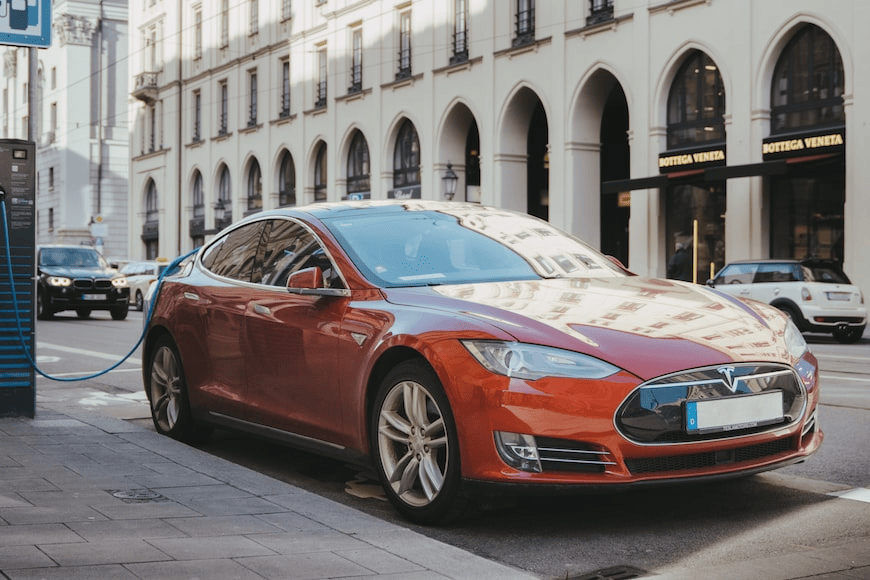From Concept to Reality: The Evolution of Self-Driving Cars
Explore the evolution of self-driving cars from their inception to the present day. Learn about the impact of AI on the development of autonomous vehicles, and how these vehicles are transforming the world of transportation. Discover the potential for self-driving cars to revolutionize the way we move.
KEY TAKEAWAYS:
- Self-driving cars have evolved from simple cruise control systems to complex, autonomous vehicles driven by safety and environmental concerns.
- Self-driving cars use sensors and algorithms to perceive their environment and make real-time decisions.
- Despite advancements, fully autonomous vehicles face regulatory and technical challenges.
- The benefits of self-driving cars include increased safety, improved efficiency, and reduced traffic congestion.
- The future of self-driving cars is likely to be shaped by ongoing technological innovation, regulatory developments, and consumer adoption.
Self-driving cars, or autonomous vehicles, have been a topic of fascination for decades. With the advent of artificial intelligence (AI) and other advanced technologies, the dream of self-driving cars has become a reality, with major companies investing billions in research and development. As self-driving cars continue to evolve, they promise to revolutionize transportation, offering numerous benefits such as increased safety, reduced congestion, and greater accessibility for individuals with disabilities. However, the road to the widespread adoption of self-driving cars is not without its challenges and controversies. In this article, we will explore the evolution of self-driving cars, from their early beginnings to the current state of the industry, and discuss the potential benefits and challenges of this transformative technology.
Early History of Self-Driving Cars
Introduction of the idea in the 1920s
The concept of self-driving cars can be traced back to the 1920s. The idea was first introduced in science fiction novels, which envisioned a future where cars could drive themselves. However, it wasn’t until the 1950s and 1960s that researchers began to seriously consider the possibility of self-driving cars.
Early experiments and prototypes in the 1980s and 1990s
In the 1980s and 1990s, researchers began to develop early prototypes of self-driving cars. These prototypes were often limited to controlled environments, such as closed courses or highways. However, they were important in demonstrating the potential of self-driving cars and refining the technology.
DARPA Grand Challenge in 2004 and 2005
In 2004, the Defense Advanced Research Projects Agency (DARPA) launched the Grand Challenge, a competition to develop autonomous vehicles that could navigate a 150-mile course in the Mojave Desert. The competition was won by a team from Stanford University, which developed a self-driving car called Stanley.

Photo: darpa
In 2005, DARPA launched another Grand Challenge, this time with a 132-mile course through the desert. This challenge was won by a team from Stanford again, with their vehicle named “Junior”.
These challenges helped to accelerate the development of self-driving cars and led to significant advances in technology. Today, self-driving cars are becoming more common on the roads, with several major automakers and tech companies investing in the technology.
Advances in Technology
Introduction of LIDAR, radar, and other sensing technologies
One of the breakthroughs in self-driving cars is the introduction of LIDAR, radar, and other sensing technologies. LIDAR stands for Light Detection and Ranging, and it uses laser sensors to create a 3D map of the environment around the car. Radar, on the other hand, uses radio waves to detect objects and measure distances. These technologies allow self-driving cars to detect obstacles and avoid collisions, even in complex traffic situations.
Development of deep learning algorithms for object recognition and decision-making
Another important aspect of self-driving cars is the development of deep learning algorithms for object recognition and decision-making. These algorithms are designed to analyze data from various sensors and make decisions based on that data. They use neural networks and other machine-learning techniques to recognize objects and predict their behavior. These algorithms allow self-driving cars to make informed decisions based on real-time data, making them safer and more reliable than traditional cars.
Integration of artificial intelligence and machine learning
The integration of artificial intelligence and machine learning has been crucial to the development of self-driving cars. These technologies enable self-driving cars to learn and adapt to changing conditions, making them more efficient and effective. AI allows self-driving cars to make decisions based on data from sensors, GPS, and other sources, making them highly accurate and reliable.
Major Players in the Industry
Overview of Major Companies Involved in the Development of Self-Driving Cars
Google’s Waymo has been working on autonomous vehicle technology for over a decade and is considered a leader in the field. They have been testing their self-driving cars on public roads in several cities across the United States. Tesla, on the other hand, has been incorporating autonomous features into their vehicles for several years and has been collecting data to improve their technology.
Uber is another major player in the industry, having launched self-driving taxis in select cities. They are also working on developing autonomous delivery vehicles. Traditional automakers such as Ford and General Motors have also been investing heavily in autonomous vehicle technology, with plans to release self-driving cars soon.
Google’s Waymo, Tesla, Uber, and Traditional Automakers such as Ford and General Motors
Google’s Waymo, Tesla, Uber, and traditional automakers such as Ford and General Motors have all made significant contributions to the development of self-driving cars. Each company has its unique approach to autonomous vehicle technology, but they all share the goal of making transportation safer and more efficient.
Autonomous vehicles rely heavily on artificial intelligence (AI) and machine learning to navigate the roads and make decisions in real time. With the continued advancement of AI, self-driving cars will become even more efficient and reliable. As the industry grows, we can expect to see more companies entering the market, bringing new and innovative ideas to the table.
Current State of Self-Driving Cars
Overview of the current state of self-driving car technology
Autonomous vehicles use a variety of sensors such as cameras, lidar, radar, and GPS to navigate the road, read traffic signs and signals, and avoid obstacles. The vehicles are powered by artificial intelligence (AI) systems, which can process the vast amounts of data collected by the sensors and make split-second decisions to control the car.
Recent advancements and successes

Photo: Alex
Major companies such as Google’s Waymo, Tesla, Uber, and traditional automakers such as Ford and General Motors have invested heavily in developing self-driving car technology. Waymo, for example, has already launched a fully autonomous ride-hailing service in Phoenix, Arizona, and has plans to expand to other cities. Tesla’s Autopilot system, which offers partial self-driving capabilities, has already been adopted by thousands of drivers.
Limitations and challenges still facing the industry
Despite these advancements, there are still limitations and challenges facing the industry. One of the major challenges is ensuring the safety of self-driving cars, especially in complex situations such as construction zones, unexpected road closures, and severe weather conditions. There are also legal and regulatory challenges, as many countries and states have yet to establish clear rules for the use of autonomous vehicles on public roads.
Another challenge is the high cost of developing and deploying self-driving car technology. The sensors, computing systems, and other components required for autonomous driving are expensive, which limits their availability to luxury vehicles and commercial fleets.
The Evolution of Self-Driving Cars
Current State of Self-Driving Cars
Self-driving cars have come a long way in the past few years, but the technology is still far from perfect. Major companies like Waymo and Cruise have been leading the charge in the development of autonomous vehicles, but there is still much work to be done. The industry is constantly facing new challenges, from technical difficulties to regulatory hurdles.
Overview of the Current State of Self-Driving Car Technology
Autonomous vehicles use a combination of sensors, cameras, and artificial intelligence (AI) to navigate the roads without human input. This technology is still being refined, but self-driving cars have already shown the potential in reducing accidents caused by human error. However, there is still work to be done in developing reliable communication systems between self-driving cars and human-driven vehicles, as well as improving the performance of sensors in adverse weather conditions.
Recent Advancements and Successes
Despite the challenges facing the industry, there have been several recent breakthroughs in the development of self-driving cars. Wayve recently announced a partnership with Microsoft to train its neural network on Azure, which could lead to significant improvements in the technology. According to Renub Research, the autonomous vehicles market is expected to grow to $186 billion by 2030, up from $4 billion in 2021, indicating strong interest and investment in the industry.
Limitations and Challenges Still Facing the Industry
While the potential benefits of self-driving cars are vast, there are still several limitations and challenges facing the industry. Safety remains a top concern, and companies must ensure that their autonomous vehicles are reliable and secure. There are also regulatory hurdles that must be overcome, particularly in terms of liability and insurance. Finally, there are concerns about the impact of self-driving cars on jobs in the transportation industry, as well as the potential for increased congestion on the roads.
The Future of Self-Driving Cars
Potential Benefits and Impacts of Self-Driving Cars on Society and the Environment
Self-driving cars have the potential to revolutionize the way we travel, providing greater mobility to those who are unable to drive, reducing traffic accidents caused by human error, and improving transportation efficiency. Autonomous vehicles could also have a significant impact on the environment, reducing emissions and improving air quality.
Integration with Smart Cities and Other Emerging Technologies
Self-driving cars will likely be a key component of smart city infrastructure, working in tandem with other emerging technologies such as the Internet of Things (IoT) and 5G networks. The integration of self-driving cars with these technologies could lead to significant improvements in traffic management and overall transportation efficiency.
Potential Challenges and Limitations to Widespread Adoption
Despite the potential benefits of self-driving cars, several challenges and limitations could hinder widespread adoption. These include technical difficulties, regulatory hurdles, and concerns about safety and privacy. Additionally, there are social and cultural factors that must be taken into account, such as public trust in technology and the potential impact on jobs in the transportation industry.
Final Thoughts
The evolution of self-driving cars is a complex and ongoing process that has the potential to revolutionize transportation as we know it. With advancements in AI technology, autonomous vehicles are becoming more efficient and reliable, making them a promising solution for the future of transportation.
The potential benefits of self-driving cars on society and the environment are immense, including reduced traffic congestion, improved safety, and decreased carbon emissions. However, the widespread adoption of autonomous vehicles faces several challenges and limitations. For instance, regulatory hurdles, cybersecurity concerns, and the need for significant investment in infrastructure.
The integration of self-driving cars with smart cities and other emerging technologies will play a critical role in shaping the future of transportation. As we continue to explore the potential of autonomous vehicles, it is important to consider both the benefits and limitations they present and to work towards finding solutions to the challenges they pose. The future of autonomous vehicles is an exciting one, and it will be fascinating to see how this technology evolves.



































